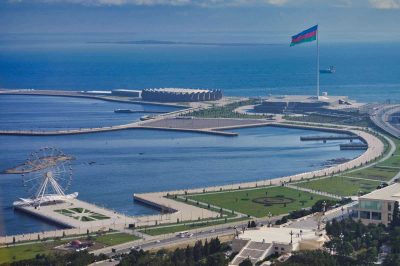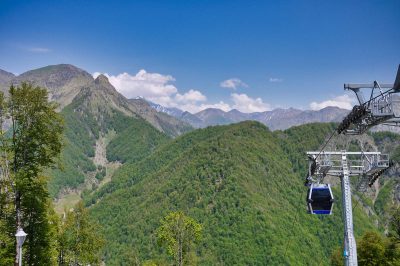Welcome to Paradise! The exclave of Nakhichevan Azerbaijan (spelled Naxçıvan in Azerbaijani) in southwestern Azerbaijan, bordering Iran, Armenia and Turkey, is an El Dorado for ethno-fans and a real insider’s tip. The breathtakingly beautiful landscape has mountains up to 4000 meters high, crystal clear lakes, sandy deserts and untouched steppes. The autonomous republic is an almost unknown spot.
Among other things, the “Machu Picchu” (Alinja Fortress) of Eurasia, the tomb of Noah and the oldest salt mine in the world can be seen in the area between Mount Ararat (Agridag) in the distance in neighboring Turkey in the north, the 16-hectare Batabat Lake in the northeast, the capital Naxçıvan City and the Araz Dam in the southwest and the oasis town of Ordubad in the southeast. Therefore, we would like to introduce Nakhichevan to you in more detail.
The Cosmic Exclave
After his return from space in 1963, Soviet cosmonaut Alexei Leonov raved that the surface of the Earth would shimmer pink from above. He had only ever seen this hue “once again on Earth, and that was in Naxçıvan,” he said in an interview.
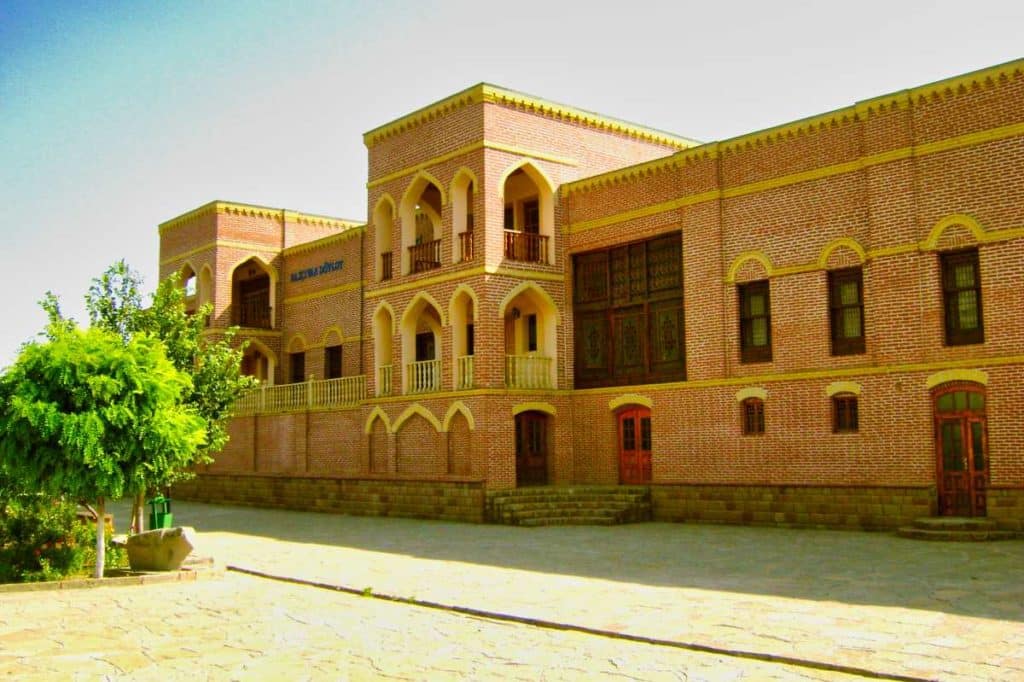
Where Noah docked and Persians and Arabs fought over a trading post
According to the legend, Nakhichevan means “place of landing”. It refers to the landing of Noah, who is said to have grazed and parted the summit of İlandağ Mountain with his ark and then landed here. Some archaeologists date the origins of the Republic to 1500 B.C. In the 7th century, the Arabs replaced the Persians of the Sassanid Empire, but lost the territory back to Persia in the 17th century. Until 1828, Naxçıvan City was the capital of the Naxçıvan Khanate, known as a center of trade and handicrafts, but Armenians, Mongols, and Turks continued to wrestle for its rule.
The long Russian rule
Persia finally ceded the territory to Russia in the Turkmenchay peace agreement. Naxçıvan became an autonomous republic within the Soviet Union in 1924, and the area between Naxçıvan and Azerbaijan was assigned to Armenia. In this way, the fascinating region around the 2420-metre-high İlandağ mountain became an exclave.
Independent and suddenly cut off from the motherland
The first president of independent Azerbaijan, Heydər Əliyev, was born in Naxçıvan and initially returned there in 1990 after his career in Moscow before moving on to Baku. The exclave has been part of Azerbaijan since 1991, but has its own constitution and parliament. In the same year, Armenia cut the railroad tracks between Baku and Naxçıvan City, further isolating the exclave, which from then on could only be reached by plane from Baku.
A Peace treaty as a glimmer of hope
Just now, as part of the peace treaty between Armenia and Azerbaijan, the train line is being reactivated after the Nagorno-Karabakh conflict flared up again in 2020, so in the future you will be able to travel there again along the Aras River on the border with Iran directly from Baku.
Nakhichevan – An Oasis of Sustainability
The isolated location has driven Naxçıvan City, with a population of nearly 400,000, to a self-willed self-assertion, even though the little-known region still receives financial support from Baku and trades briskly with Turkey and Iran. The Chinese carmaker Lifan Industry maintains a factory here. Agriculture is the main occupation. When the mostly dry plains are irrigated, grain, tobacco, walnut trees, mulberries for silk moths and all kinds of fruits thrive on the soil. The exclave also has its own mineral springs. Fertilizers are not used, everything here is organic.
The mystical land also relies on self-sufficiency and sustainability and was named “the world’s most sustainable nation” by Lonely Planet. Silk and cotton production as well as ore deposits and sheep’s wool for the carpet industry are further sources of income. For several years, the exclave has been involved in EU projects on renewable energies, environmental protection and water management, for example.
These are the most beautiful places in Nakhichevan Azerbaijan
Naxçıvan City – The Islamic Capital of Culture
Naxçıvan City was the Islamic Capital of Culture in 2018. The city has a variety of significant cultural legacies to offer. Naxçıvan’s medieval school of architecture was famous throughout the Orient. Monuments, mausoleums and museums make the capital, where Noah’s ark is said to have landed, an interesting starting point for a trip. Noah’s Tomb, the Möminə Xatun Mausoleum and the Khan Palace are definitely worth seeing. Temperatures in Naxçıvan vary depending on the season. In winter it can be as cold as minus 30 degrees, and in summer it can be as warm as 35 degrees. The most beautiful months are April and May. Autumn is also an ideal time to travel.
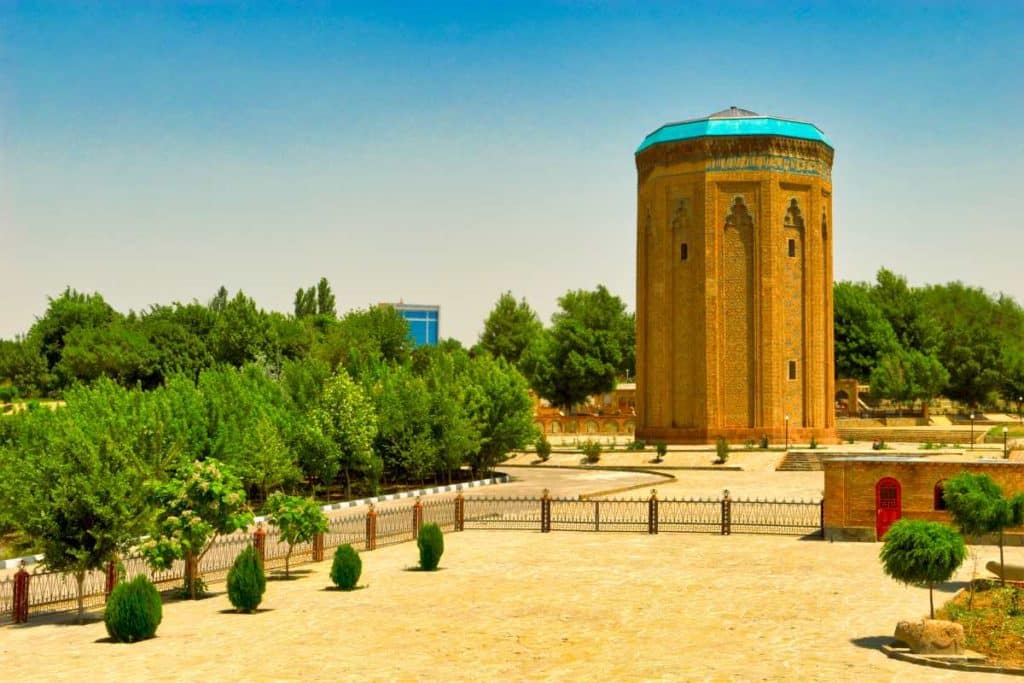
Möminə Xatun
One of the highlights in the incredibly clean and very well-kept capital of the exclave, which is rich in monuments, is the 34-metre-high, decagonal brick tower built in 1186 in honor of a woman named Möminə Xatun, which was decorated with unusual geometric patterns, turquoise tiles and a kufi inscription. The founder of the Atabey dynasty, Shamsaddin Eldaniz, commissioned the building from the renowned architect Ajemi Nakhchivani in honor of his deceased first wife and later had it completed by his son. In contrast to the typical building materials of the Abşeron Peninsula (sandstone), bricks and turquoise tiles were frequently used in Naxçıvan.
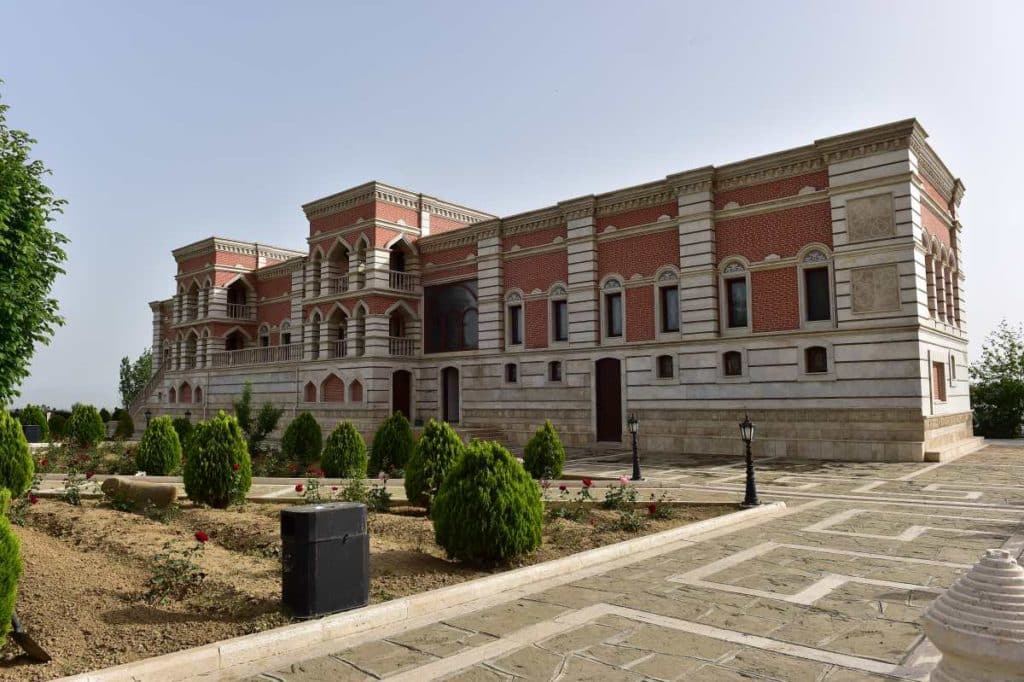
The Khan’s Palace
From here, it is worth taking a walk to the old Khan Palace, where historical photos shed light on the history of this restored jewel. The carpet museum housed in the palace provides insights into the local art of knotting and weaving.
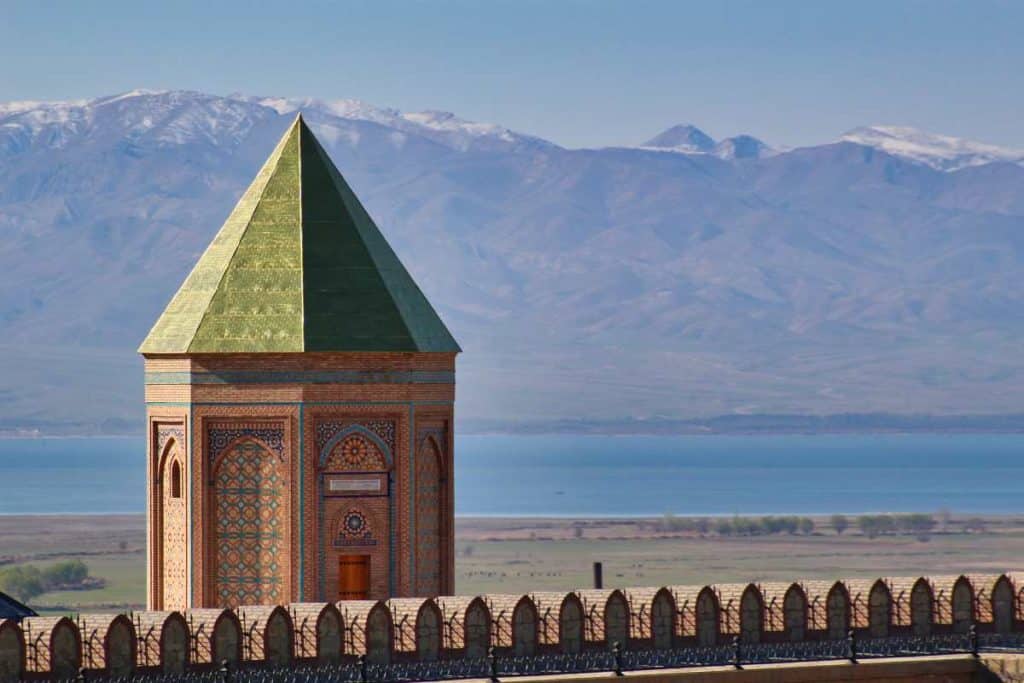
Noah’s Tomb
Noah’s Tomb in the form of an octagonal tower with a polygonal gold dome is part of the Sassanid fortress. The structure was renovated in 2008, integrating the preserved foundations. The huge Heydər Əliyev Mosque, just a stone’s throw away, was built recently. The 7th century fortress was in a state of disrepair until 2006. Since the restoration, it is once again open to visitors.

Tip: An overnight stay at the 13-story Hotel Tabriz (tel. +994 365447701) includes a delicious breakfast at the city’s only panoramic restaurant.

Alinja Fortress
Built in the 12th century, the fortress 34 kilometers northwest of the capital withstood a fourteen-year siege by the Mongol leader Tamerlan at the end of the 14th century and is still impressively solid today. You can visit the museum located at the foot of the fortress, but it’s the panorama from above that makes this trip unforgettable.
If 1500 steps do not scare you, you will reach the plateau with the “Machu Picchu of Eurasia”, an excavation site that was recently restored or rebuilt. From there you will have the best view of Mount İlandağ, which, according to legend, Noah touched with his ark. After visiting the fortress, you can cool off in the nearby Ashab-i Kahf caves, which were already mentioned in the Koran and today attract many pilgrims.
Cehan Kudi Xatun Mausoleum
The second most important mausoleum in the Nakhichevan exclave is located in a small village called Qarabağlar, 40 kilometers northwest of Naxçıvan City, and stands out for its cylindrical shape wrapped in blue tiles, consisting of twelve half-cylinders grouped around each other with a cornice and conical roof end. A few meters away you will find a gate with double minaret. The cultic center was built in the 14th century and extensively renovated in 2018. However, none of the once 70 mosques of the old trading city has been preserved.
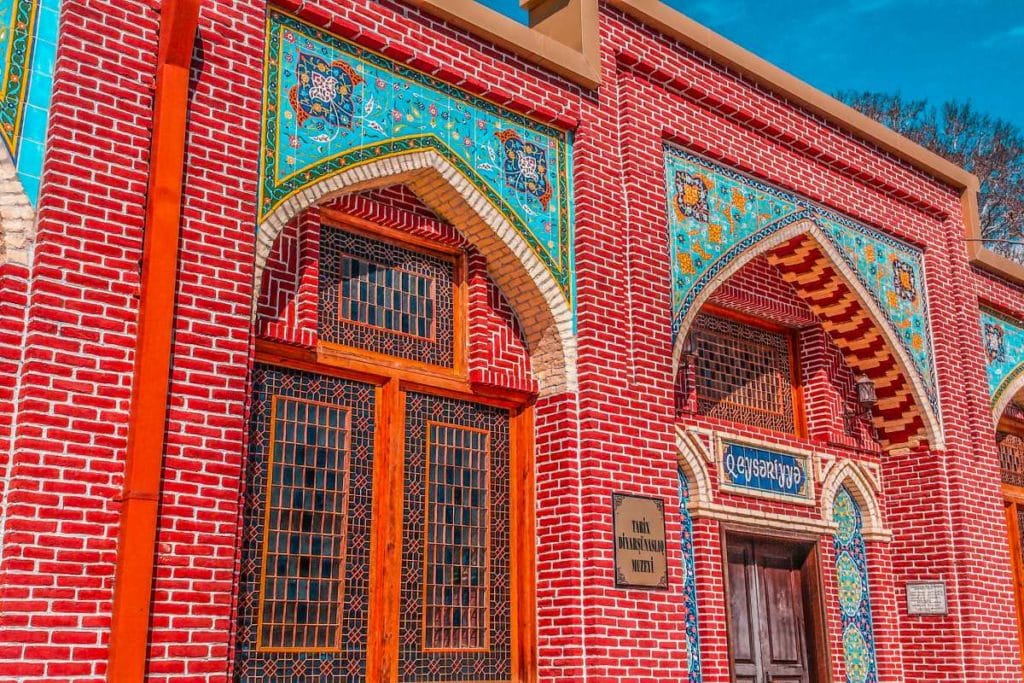
Ordubad
The most picturesque place in the republic is surrounded by desert and has only 10,000 inhabitants. You can reach this oasis blessed with apricots, peaches, limes, figs and pears on the river of the same name, whose produce is dried for export, by minibus in around 90 minutes. Three mosques from the 17th and 18th centuries have been preserved. The observatory dedicated to the Persian theologian, mathematician and astronomer Nasraddin Tusi is well worth a visit.
An important stop on the Silk Road
From the middle of the 16th century, the silk produced here was shipped from Ordubad to Venice, Marseille and Amsterdam via the Silk Road. In the 1930s, there were almost 500 orchards and 50 vineyards in Ordubad. The former medieval trading town has been on the UNESCO Tentative List since 2001, not least because of its architecturally unique “Harpischta Houses”. These are residential buildings with semi-circular bay windows with eight or six pointed arches on the first floor, which lead into an inner courtyard. The 17th century Juma Mosque looks more like a palace. Petroglyphs and necropolises can be seen in the Zangazur National Park. The most beautiful place, however, is the cozy teahouse in the center, surrounded by fragrant plane trees.

Duzdağ salt mine and hotel
10 kilometers from Naxçıvan City is the oldest salt mine in the world, which has been equipped with disco lighting and a wooden teahouse for sightseeing purposes. You can hike up to 300 meters deep into the salt mine, which stores almost 130 million tons of natural salt. You can linger in small alcoves with comfortable loungers and breathe in the healthy air. The salt museum and the chic Duzdağ Resort* with pool area, water slides and spa are just one kilometer away.
The petroglyphs of Gemiqaya
Even if you have to take a closer look to decipher the petroglyphs, the trip to the Armenian border is worthwhile for lovers of this historical evidence. The petroglyphs are said to be six thousand years old and are supposedly similar to the Domkhar inscriptions in Ladakh. As you need a permit to visit them, it is easier to book an excursion through Nakhchivan Travel.
Book tips
Classical travel guide, that also covers Armenia and Georgia.
- Holger Kretzschmar (Author)
A very personal travelogue that presents Azerbaijan from the perspective of a German and was highly praised by the press.
Are you planning a trip to the Azerbaijani capital Baku, one of the most beautiful sights in Azerbaijan? Then the CityTrip Baku is the ideal companion for your trip. It describes the most beautiful sights and walks through the city, gives you tips on the best places to eat and sleep and provides many background articles with exciting details about the life of the people in Baku.
- Johenning, Heike Maria (Author)
The classic of Azerbaijani literature, which tells a love story on the eve of the Russian Revolution and contains an impressive epilogue by Nino Haratischwili.
- Said, Kurban (Author)
Portrait of Azerbaijan, presenting the country in all its facets.
Baku is also a particularly worthwhile destination if you are passionate about architecture. I have presented the city’s most beautiful buildings in my Baku architecture guide. Impressive pictures bring you very close to them and enrich your vacation!
- Heike Maria Johenning (Author)
How did you like our trip to Nakhichevan? Let us know and write us a comment. You can also follow us on Facebook to keep up to date with the latest articles!


